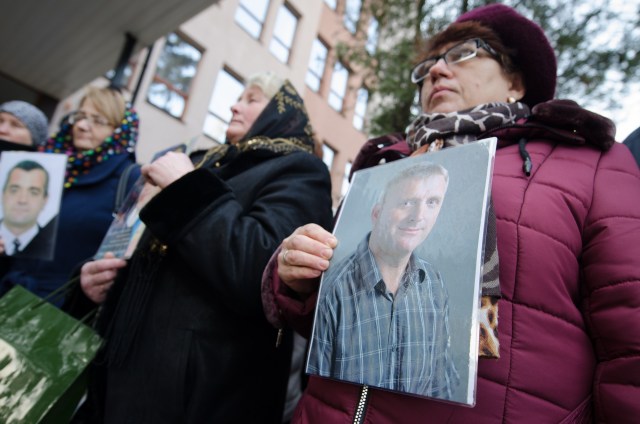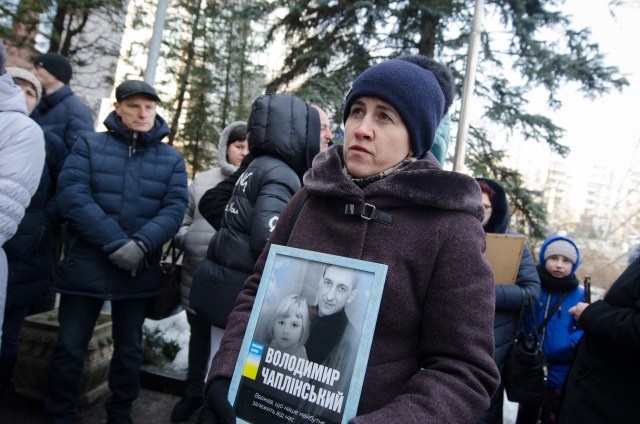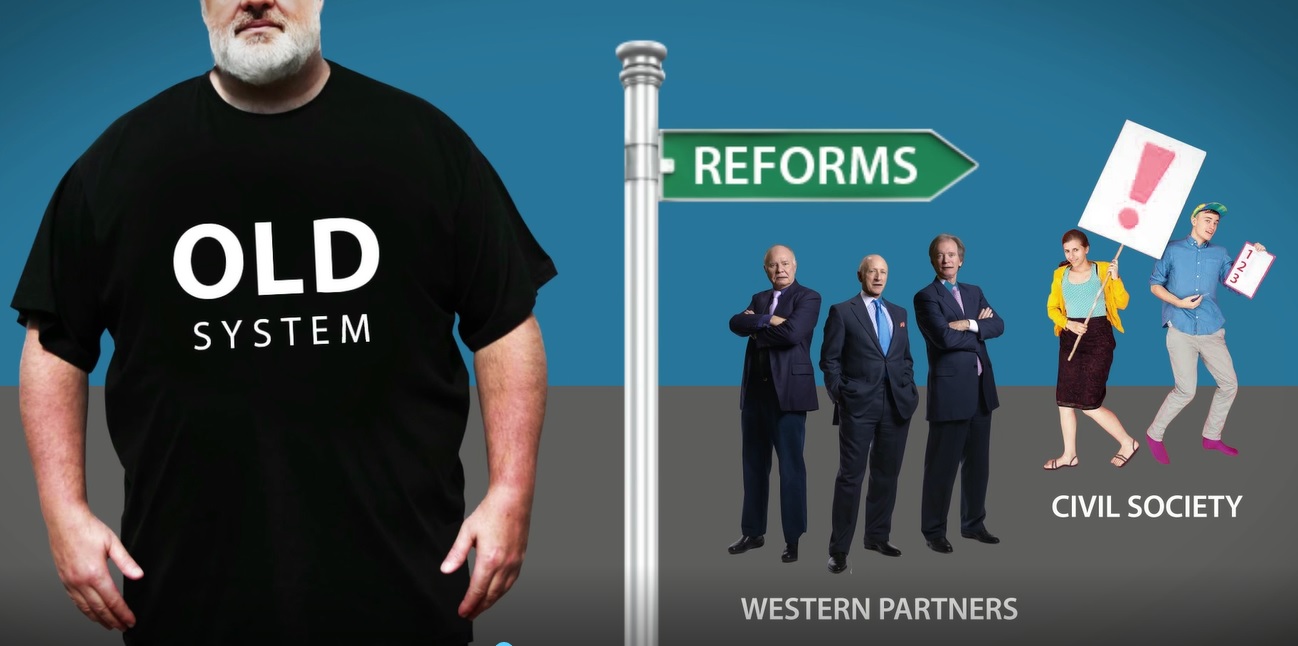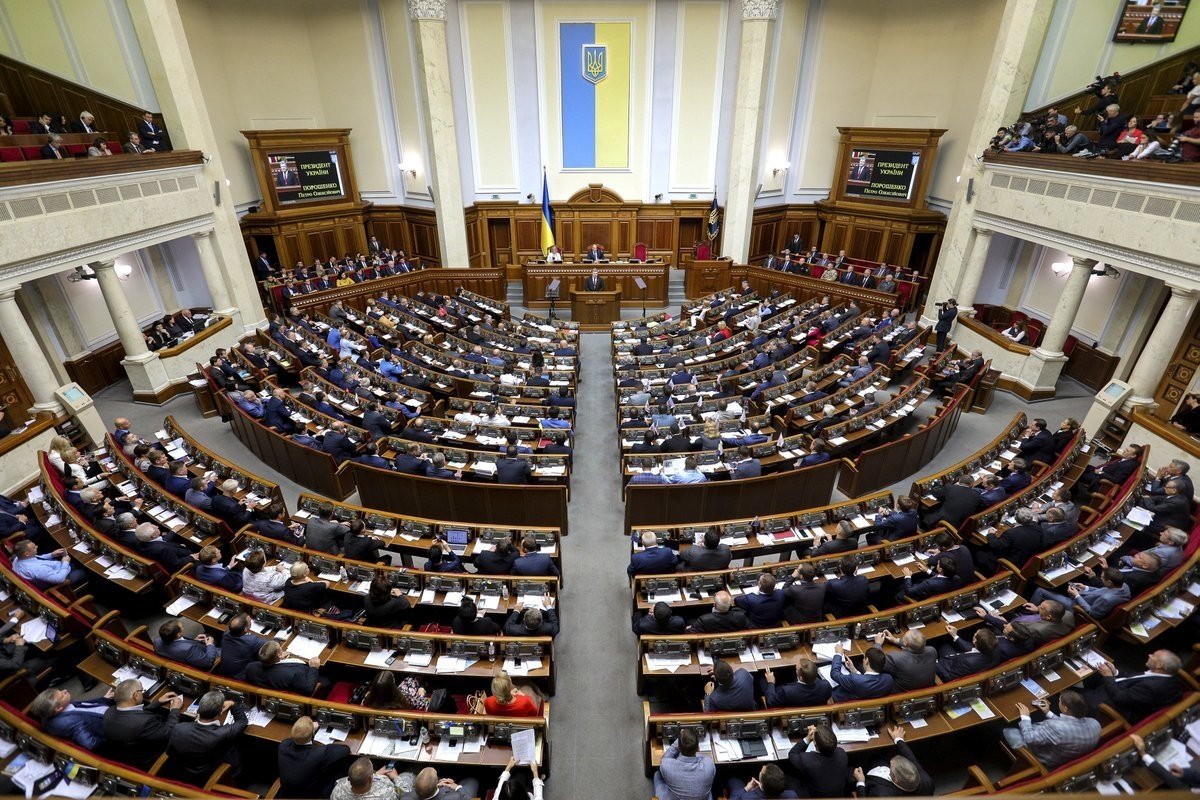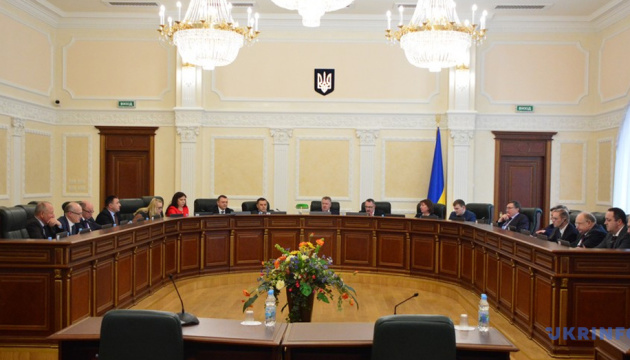On 20 February, family members of those protesters who died during the Revolution of Dignity (the “Heavenly Hundred”) gathered near the offices of the High Qualification Commission of Judges (HQCJ), to demand the dismissal of the judges who had prosecuted activists. The commission is responsible for creating the judicial corps; including their selection, assessment, and dismissal. Family members of fallen protesters have applied to the commission every year to bring justice, without avail. Since 2014, 17 of these judges have died and thus escaped any form of retribution.
Photos: slidstvo.info
“Maybe we were like small children, but we hoped that these crimes will be investigated soon, in hot pursuit. But now everything like turned back, like nothing has happened," Oksana, mother of killed activist Ihor Kostenko told Slidstvo.info.
The HQCJ has been the central body involved in judicial reform. Despite President Petro Poroshenko’s limpid assurances of success, actual results have not been effective. During nearly three years of demands for progress, little has changed. The commission has continued to approve ethically compromised judges to advance “so-called” reforms to the courts and to create fair judicial institutions.
Who are the Maidan judges?
Since the revolution, the term “Maidan judges” has taken root in the lexicon of activists pushing for reform. Activists have designated these judges as being responsible for major repression, such as:
- banning peaceful assemblies; convicting activists for alleged violent resistance to law enforcement officers;
- alleging violation of orders for peaceful assembly; using false documents to withdraw driving permits;
- and sentencing protesters, then launching investigations against them.
Activists from Automaidan—a movement born out of the Euromaidan Revolution—have focused their efforts on the fight against corruption and abuses of law enforcement, and on judicial reforms. They have presented a database of Maidan judges, listing 337 servants of justice, their rulings, and any penalties they may have received. The list is based on information contained in the judicial register as well as facts arising from investigations.
Cleansing the judiciary of these blemished judges was meant to be addressed by two new laws: the Lustration Law and the Law on Restoring Confidence in Ukraine’s Judicial Authority
. However, Automaidan activists have confirmed that of 337 Maidan judges, 227 remain on the bench. In reality, only 110 are gone: 55 for actual violations; 45 from resignations—while retaining their status and privileges; and the remainder for other reasons.
Moreover, 57 judges have appealed their dismissals. Roman Maselko, Automaidan activist and the lawyer representing families of the Heavenly Hundred, has surmised that many of the dismissed judges could be reinstated, due to procedural oversights.
The conceivable review of judges for violations of conduct was anticipated by drafters of the reform laws--thus, a formal process was introduced. Of the 129 judges whose qualifications have been assessed by the HQCJ, 65 have successfully passed the process. No final decisions have been reached on 48 judges--15 of whom have been recommended for dismissal but have not yet been so.
Maselko noted that according to the Lustration Law, 112 judges were to be dismissed and prohibited from holding their position for 10 years—to date, none have been dismissed.
“There has been a manipulation: the lustration examination has been based on the presence of these unlawful decisions in the register. However, they simply were not put into the register. But they exist.”
Bohdan Bondarchuk, the head of the Families of Heavenly Hundred NGO has drawn attention to the fact that many of the Maidan judges are indeed still handing down judgments, and in many serious cases, such as felonies, murders, and assaults.
“We see that delays take place in these particular courts. There are cases which can’t be started up to two years.”
Bondarchuk estimated that if cases continue to be heard in this manner, some might last as long as 36 years.
Perhaps most concerning for activists is that the HQCJ and the High Council of Justice--another self-governing body--will not conduct any true cleansing because they consist mostly of cronies—judges selected by judges.
Right now, competitions are underway for two key judicial institutions: the High Anti-Corruption Court and the new Supreme Court. Maidan judges have been jockeying to be named to the Anti-Corruption Court--a court which was created especially to try cases of top-level corruption.
However, the process is being monitored by Ukraine’s western partners and with participating international experts. As a result, Maidan judges are being discarded.
Nonetheless, judicial reform activists have lingering doubts. The final appointments to the new court will ultimately depend on the judicial institutions who are self-governing--in other words, can the process be truly untainted?
Powerful forces have openly backed Maidan judges for the Supreme Court, in opposition to other qualified candidates. The Public Integrity Council--the civil society judiciary watchdog--has criticized this practice. But the HQCJ has not intervened.
Consequently, there is a real possibility that these questionable judges may be appointed to the new Supreme Court. One need only look to the early results of the competition, to see that some Maidan judges have indeed already managed to succeed.
Read also:
- Society guarding fairness of Ukraine’s Supreme Court: 78 new judges to be selected next months
- Two years of judicial reform in Ukraine were faked, money wasted – civil society watchdog
- David and Goliath of Ukraine’s judiciary: new civic society watchdog to face old problems with the system
- The Court – Euromaidan Press documentary on the creation of the Anti-Corruption Court
- Saving Ukraine’s Anti-Corruption Court: international experts filter candidates, facing roadblocks from old system




